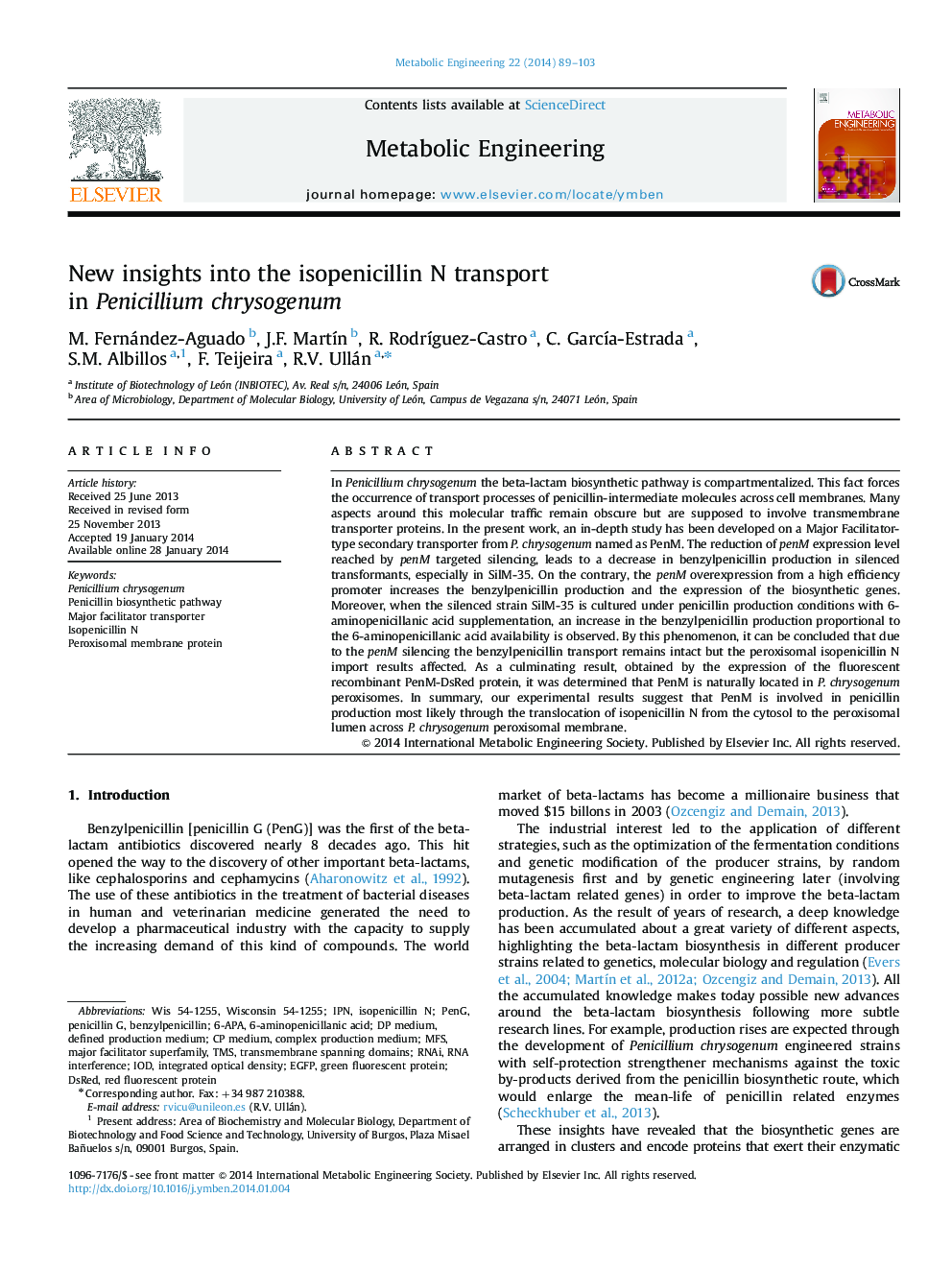| Article ID | Journal | Published Year | Pages | File Type |
|---|---|---|---|---|
| 6494629 | Metabolic Engineering | 2014 | 15 Pages |
Abstract
In Penicillium chrysogenum the beta-lactam biosynthetic pathway is compartmentalized. This fact forces the occurrence of transport processes of penicillin-intermediate molecules across cell membranes. Many aspects around this molecular traffic remain obscure but are supposed to involve transmembrane transporter proteins. In the present work, an in-depth study has been developed on a Major Facilitator-type secondary transporter from P. chrysogenum named as PenM. The reduction of penM expression level reached by penM targeted silencing, leads to a decrease in benzylpenicillin production in silenced transformants, especially in SilM-35. On the contrary, the penM overexpression from a high efficiency promoter increases the benzylpenicillin production and the expression of the biosynthetic genes. Moreover, when the silenced strain SilM-35 is cultured under penicillin production conditions with 6-aminopenicillanic acid supplementation, an increase in the benzylpenicillin production proportional to the 6-aminopenicillanic acid availability is observed. By this phenomenon, it can be concluded that due to the penM silencing the benzylpenicillin transport remains intact but the peroxisomal isopenicillin N import results affected. As a culminating result, obtained by the expression of the fluorescent recombinant PenM-DsRed protein, it was determined that PenM is naturally located in P. chrysogenum peroxisomes. In summary, our experimental results suggest that PenM is involved in penicillin production most likely through the translocation of isopenicillin N from the cytosol to the peroxisomal lumen across P. chrysogenum peroxisomal membrane.
Keywords
Related Topics
Physical Sciences and Engineering
Chemical Engineering
Bioengineering
Authors
M. Fernández-Aguado, J.F. MartÃn, R. RodrÃguez-Castro, C. GarcÃa-Estrada, S.M. Albillos, F. Teijeira, R.V. Ullán,
